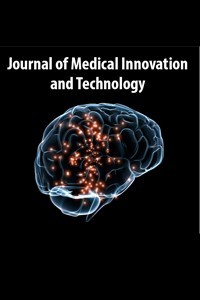Üç Boyutlu Yazıcı Yardımı ile Transfenoidal Hipofizektomi
Transsfenoidal hipofizektomi, akromegali, 3B baskı
3d-Printer Assisted Transsphenoidal Hypophysectomy
Transsphenoidal hypophysectomy, acromegaly, 3D printing,
___
- 1. Melmed S, Colao A, Barkan A, Molitch M, Grossman A, Kleinberg D, et al. Guidelines for acromegaly management: an update. The Journal of Clinical Endocrinology & Metabolism. 2009;94(5):1509-17.
- 2. Vakharia VN, Vakharia NN, Hill CS. Review of 3-dimensional printing on cranial neurosurgery simulation training. World neurosurgery. 2016;88:188-98.
- 3. Krzentowska-Korek A, Gołkowski F, Bałdys-Waligórska A, Hubalewska-Dydejczyk A. Efficacy and complications of neurosurgical treatment of acromegaly. Pituitary. 2011;14(2):157-62.
- 4. Grottoli S, Gasco V, Ragazzoni F, Ghigo E. Hormonal diagnosis of GH hypersecretory states. Journal of endocrinological investigation. 2003;26(10 Suppl):27-35.
- 5. GRUBU THÇ. Hipofiz Hastaliklari Tani, Tedavi ve izlem Kilavuzu. Ankara, Tiirkiye Endokrinoloji ve Metabolizma Dernegi. 2009.
- 6. Herrmann B, Mortsch F, Berg C, Weischer T, Mohr C, Mann K. Acromegaly: a cross-sectional analysis of the oral and maxillofacial pathologies. Experimental and clinical endocrinology & diabetes. 2011;119(01):9-14.
- 7. Kristof RA, Grote A, Redel L, Neuloh G, Klingmüller D, Schramm J. The common consensus criteria have high predictive values for long-term postoperative acromegaly remission. Acta neurochirurgica. 2011;153(1):19-25.
- 8. Black PM, Zervas NT, Candia GL. Incidence and management of complications of transsphenoidal operation for pituitary adenomas. Neurosurgery. 1987;20(6):920-4.
- ISSN: 2667-8977
- Başlangıç: 2019
- Yayıncı: Eskişehir Osmangazi Üniversitesi
Kraniosinostoz Cerrahisi ve Üç Boyutlu Baskı Teknolojisi Kullanımı
İlker Deniz CİNGÖZ, Salih KAVUNCU
Meryem Cansu ŞAHİN, İsmail KAYA, Nevin AYDIN, İlker Deniz CİNGÖZ, Hasan Emre AYDIN
Gelişimsel beyin durumlarını iyileştirmek için evde nörogeribildirim ve GFCF diyeti
Üç Boyutlu Yazıcı Yardımı ile Transfenoidal Hipofizektomi
Ali Osman MUÇUOĞLU, Muharrem Furkan YÜZBAŞI, Ege COŞKUN, R. Buğra HÜSEMOĞLU, Ercan ÖZER
3D Baskı Kullanarak Kişiye Özel Asetabular Labrum Kalıbı
R. Buğra HÜSEMOĞLU, Belma NALBANT, Mehmet DİLSİZ, Hasan HAVITÇIOĞLU
Nöroşirurjide İmplant ve İmmünite
Ceren KIZMAZOĞLU, Hasan Emre AYDIN, Orhan KALEMCİ
3 Boyutlu Yazıcı Teknolojisi İle Cerrahi Alet Üretimi; Mikro Disektör
İlker Deniz CİNGÖZ, Şafak ÖZYÖRÜK, Buğra HÜSEMOĞLU, Meryem Cansu ŞAHİN
